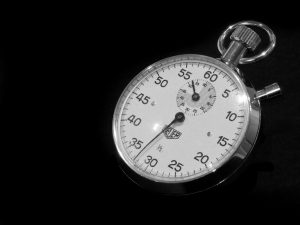 This is the 5th post in our series in our Definitive Guide to Improving Ball Handling be sure to check out the other episodes in the series … (Intro, Why and When to Dribble, Dribbling Mechanics, Mastering Skills) … When trying to improve at something, it almost always makes sense to set goals, track your progress, and find a way to measure yourself to see if you are getting better. Ball handling is no different. If you set goals well it allows you to track improvements, it motivates you to hit a milestone, it creates urgency to make sure you get there, and it can actually help you accomplish more than you would have without goals.
This is the 5th post in our series in our Definitive Guide to Improving Ball Handling be sure to check out the other episodes in the series … (Intro, Why and When to Dribble, Dribbling Mechanics, Mastering Skills) … When trying to improve at something, it almost always makes sense to set goals, track your progress, and find a way to measure yourself to see if you are getting better. Ball handling is no different. If you set goals well it allows you to track improvements, it motivates you to hit a milestone, it creates urgency to make sure you get there, and it can actually help you accomplish more than you would have without goals.
We are going to cover some different ways to measure ball handling then we are going to talk about a good methodology for setting goals.
Some ways to measure ball handling
Measuring ball handling can be a little tricky because there is sometimes a way to cut corners or “game” a drill, but if you are truly working hard and want to be better you will always go all out and do the drills right.
Measure for time
Measuring a drill for time is a good measurement of hand speed and control. This usually takes the form of seeing how many repetitions you can do in a limited amount of time. I think this is a great test and one of the more difficult drills to “cheat” on (unless you just count wrong). Measuring for time also takes into account mistakes, because if you lose the ball you will not be able to accumulate reps in that time.
An example: In a stationary position dribble behind the back…back and forth right to left. Count one rep each time the ball hits the right hand (you can get low down in a squat if you want). The key here is to get better each time you test. For comparison, a good college guard can usually get 55 reps in 30 seconds!
Measure mistakes
Often measuring for mistakes is best for a younger player to get them to learn form before progressing on to measuring speed. When a player is more advanced you can still measure for mistakes, but you should add a time cap to ensure they aren’t going slower than they are capable of. The goal with these drills is either to complete as many consecutive as you can with no errors…. Or to finish the drill with the lowest possible number of errors
An example: Using only strong hand…toss the ball off the backboard from a standstill, as the ball bounces off the backboard back toward you, jump in the air and with one hand only catch the ball while you are off the ground and toss it back off the backboard before landing. Then you will quickly jump again and repeat. If you land while you are holding the ball, lose control of the ball, use two hands, or any other mistakes you fail. As a comparison point, all high school players should be able to do 30 consecutive with either their strong or weak hand.
Combination
Sometimes we will combine time with mistakes. For example, we will set-up a series of cones for an athlete to dribble through and they will have to complete the whole course within an allotted time and with less than 1 or 2 mistakes.
An example: dribble through 8 cones back and forth 3 times while doing a 2-ball between the legs dribble at each cone. Complete this within 2 minutes and with less than one mistake. This is just a theoretical example, so nothing to compare here, but we wanted to give you the idea!
Self-Assessment or Coach’s Assessment
It isn’t always easy to measure ball handling, so sometimes you need to just give it a letter grade or a ranking! One way to do this is to study film of yourself doing drills or playing in practices/games and evaluate how well you handle the ball. It also might be better to have a coach or trainer do this for you so you get a more unbiased grade.
An example: At the beginning of a training program or season have a coach give you a (or give yourself) a letter grade (A,B,C,D,F … you can also use + or – ) on these categories: overall ball-handling ability, strength with the ball, ability to handle when pressured, ball handling ability at full speed, etc… Then you would have a coach grade (or grade yourself) you again at the end-point (and perhaps halfway through as well) to see if you have improved.
Statistics
Measuring statistics can also be a good indicator. For ball handling that statistic could be how many turnovers you have, how many pick and rolls you execute correctly, etc.. You can keep these in your head during practices, ask a coach to keep track, or sometimes teams will have statisticians or managers at practice to measure those things.
Use the acronym S.M.A.R.T. for setting your goals
S = Specific: You must set a specific goal (e.g. make 91% of my free throws)
M= Measurable: It works best to set measurable goals that you can review and understand if you met the goal (free throws work for this example as well because you can measure how many free throws you make vs. miss)
A= Action Oriented / Attainable.: It is best for a goal to be action-oriented if possible. That means a few things. (1) It should be something thank you actually do (not something you think or attitude related) (2) If you can align it with a level of effort that is ideal. Some put the A as attainable, but I think that is too close to relevant.
R= Reasonable / Relevant: The goal should be something that is not completely unrealistic. If it isn’t something that you can at least imagine being able to do, then you will get discouraged. Make it something you think you can do! If you are 4’11” and can’t touch the bottom of the backboard, your goal shouldn’t be to touch the top of the backboard in 3 weeks. Make the goal difficult, but possible! That said, always push yourself just a little further than what you think you should.
T=Timely: Always assign some sort of time limit or timing for a goal. For example, I want to be able to dunk two handed off of two feet by the end of the summer!
Be sure to follow the SMART guidelines when setting your goals. When you set your goals, separate them into two groups: short-term & long-term.
Measuring progress and seeing progress (we highly encourage filming yourself regularly) can go a long way in motivating you toward becoming a great player. Take a look at this video to see one example of a player that made a lot of improvement in a short time. The “before” shots almost look like he is trying to make mistakes, but I assure you, he was not!
This is the 5th post in our series in our Definitive Guide to Improving Ball Handling be sure to check out the other episodes in the series … (Intro, Why and When to Dribble, Dribbling Mechanics, Mastering Skills) …
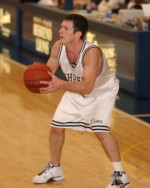 He has 25 years of experience playing basketball, training basketball players, and coaching basketball. The World of Hoops provides intelligent and intense basketball training to take basketball players to the next level.
He has 25 years of experience playing basketball, training basketball players, and coaching basketball. The World of Hoops provides intelligent and intense basketball training to take basketball players to the next level. The Pivot Foot – Which Foot to Use – Permanent vs. Switching
The Pivot Foot – Which Foot to Use – Permanent vs. Switching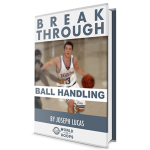 A Great Investment – Breakthrough Ball Handling
A Great Investment – Breakthrough Ball Handling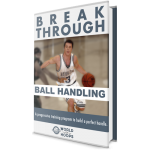 Ball Handling Ep. 9 – Breakthrough Ball Handling
Ball Handling Ep. 9 – Breakthrough Ball Handling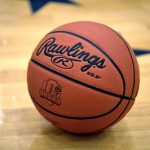 Ball Handling Improvement – The Proof
Ball Handling Improvement – The Proof




Speak Your Mind